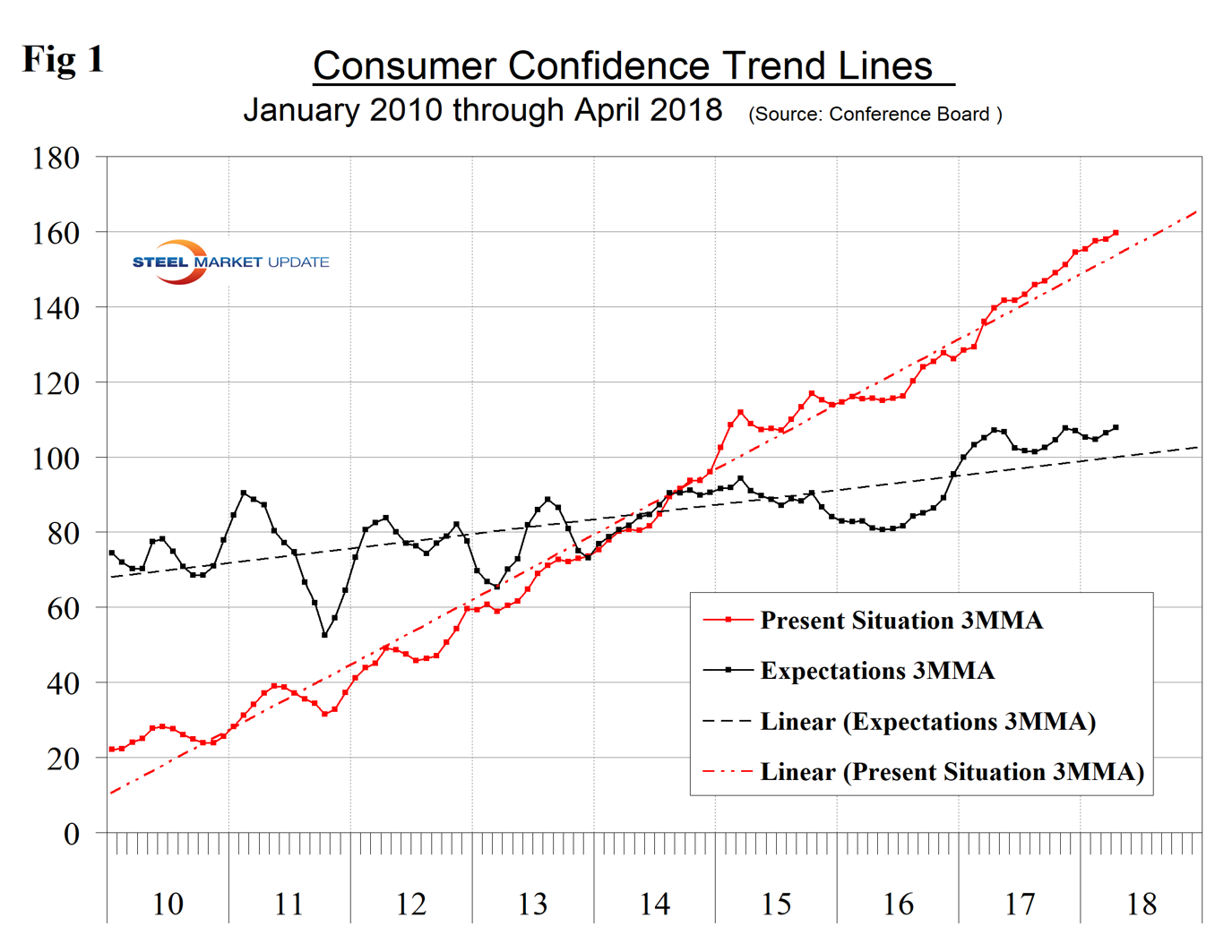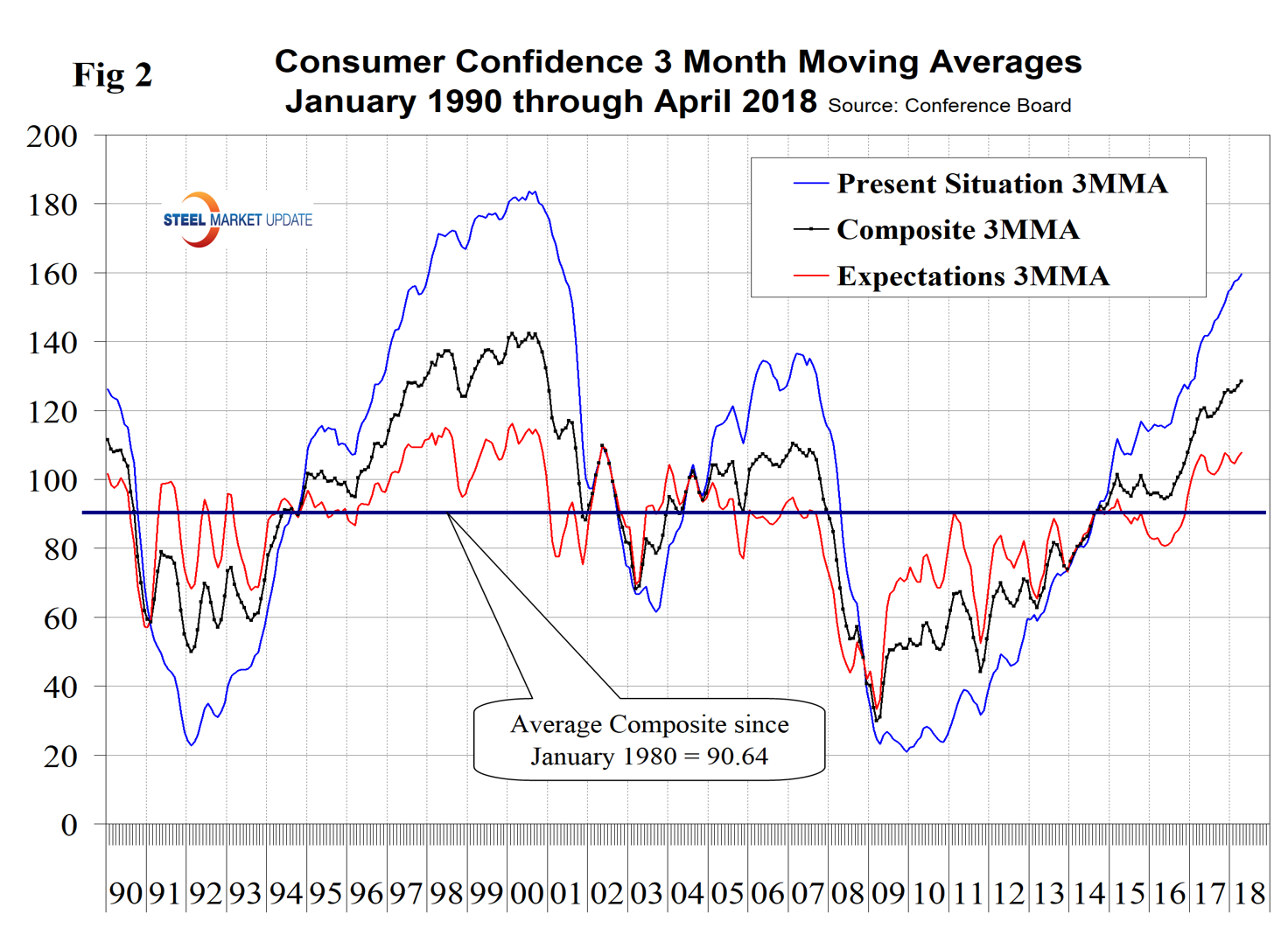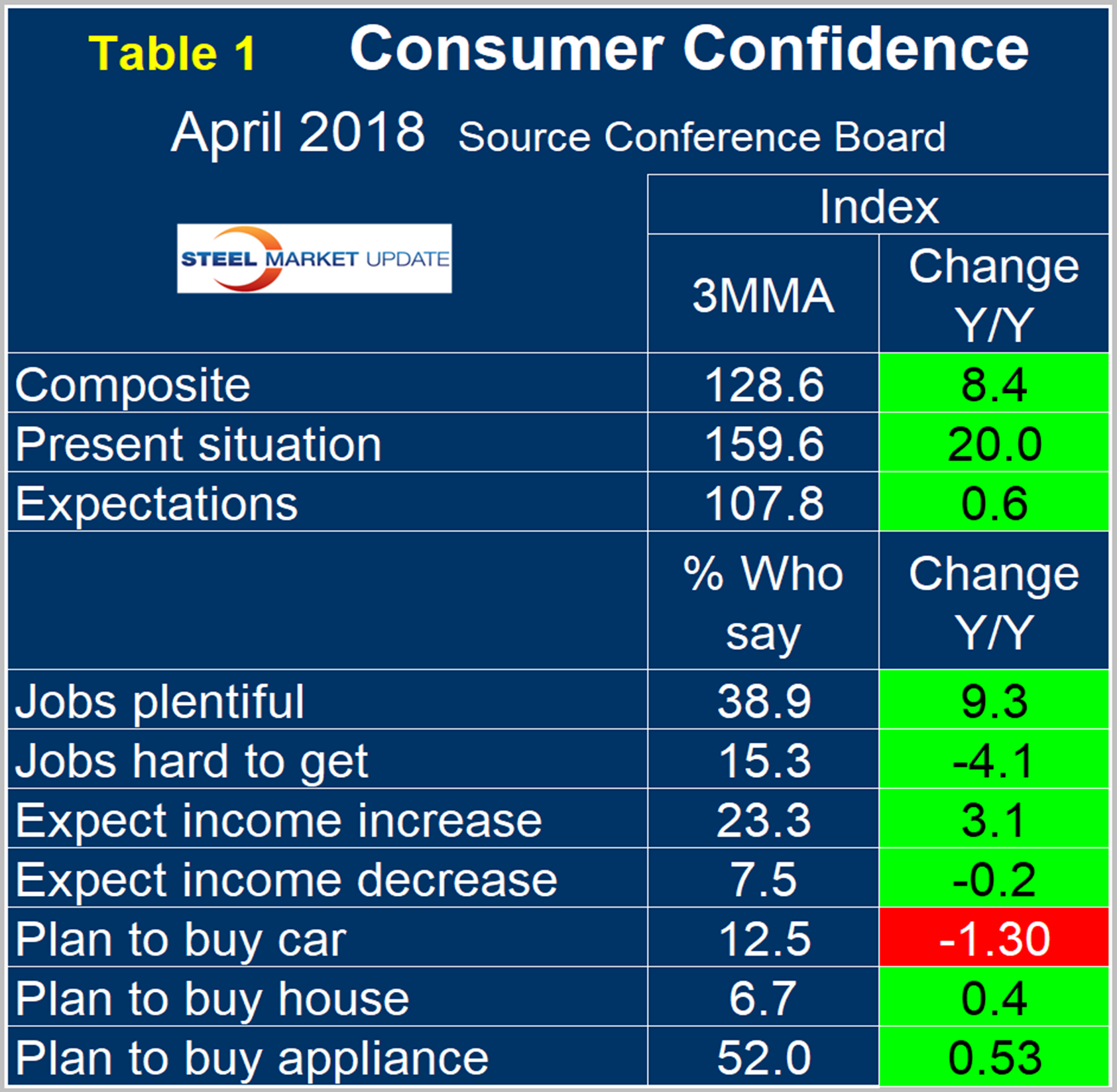Economy

Consumer Confidence Rebounds in April
Written by Peter Wright
April 30, 2018
Consumer confidence dipped slightly in March and recovered partially in April, but the three-month moving average (3MMA) has advanced for nine of the last 10 months, according to data from The Conference Board’s Consumer Confidence Survey. The composite value of consumer confidence in April was 128.7, up from 127.0 in March. The 3MMA increased from 127.1 in March to 128.6 in April, which was 8.4 points higher than in April last year.
We prefer to smooth the data with a moving average because of monthly volatility, which in the case of consumer confidence has been quite extreme since the beginning of 2016. The composite index is made up of two sub-indexes. These are the consumer’s view of the present situation and his or her expectations for the future. Both are now above their nine-year trend line (Figure 1).

The historical pattern of the 3MMA of the composite, the view of the present situation and expectations since January 1990 are shown in Figure 2.

All three measures are now higher than they were at the pre-recession peak of 2007. The 3MMA of both components of the composite surged from mid-2016 until June 2017 when expectations briefly declined. Expectations have been relatively constant for a year, but the consumer’s view of the present situation is continuing to surge. Comparing April 2018 with April 2017, the 3MMA of the present situation was up by 20.0 and expectations were up by 0.6 (Table 1).

In April, the color designations in Table 1 were the same as in February with only plans to buy an automobile having a year-over-year decline. This was an improvement from March when plans to buy a house and an appliance were also negative. All sub-indices in Table 1 were green in December and January. The consumer confidence report includes encouraging data on job availability and wage expectations. It reports on the proportion of people who find that jobs are hard to get and those who believe jobs are plentiful, and it measures those who expect a wage increase or a decrease. Since February 2011, both employment components have steadily improved. The difference between those finding jobs plentiful and hard to get has been over 20 percent in the last six months and in April 2018 stood at 22.9 percent. Expectations for wage increases have been less consistent, but the differential between those expecting an increase and those expecting a decrease has been in positive double digits since January 2017.
Economy.com summarized as follows: “Consumer confidence rose 1.7 points in April, rising to 128.7 and offsetting roughly half of last month’s 3-point decline. The improvement was split between a 1.5-point gain in present situations and a 1.9-point gain in consumer expectations. While both indexes rose, the underlying data showed more of a trend towards neutral sentiment, rather than rising optimism. Business conditions and employment conditions were rated more normal than they were in March, with fewer respondents willing to describe conditions as good or bad. Expectations were a bit brighter, thanks mostly to a strong rebound in business expectations. Purchase plans recovered after last month’s drop, though vacation plans remain deflated.”
SMU Comment: Steel demand is dependent on the growth of GDP, which in turn is strongly influenced by consumer confidence and disposable income. The current consumer confidence report is excellent in both these respects.
About The Conference Board: The Conference Board is a global, independent business membership and research association working in the public interest. Its mission is to provide the world’s leading organizations with the practical knowledge they need to improve their performance and better serve society. The monthly Consumer Confidence Survey®, based on a probability-design random sample, is conducted for The Conference Board by Nielsen, a leading global provider of information and analytics around what consumers buy and watch. The index is based on 1985 = 100. The composite value of consumer confidence combines the view of the present situation and of expectations for the next six months.

Peter Wright
Read more from Peter WrightLatest in Economy

Architecture firm billings remain down in January
Architecture firms continued to report a sharp reduction in billings in January, according to the latest Architecture Billings Index (ABI) released by the American Institute of Architects (AIA) and Deltek.

New York state manufacturing rebounds in February
Business activity in New York state’s manufacturing sector recovered nicely in February after a sharp decline the previous month, according to the latest Empire State Manufacturing Survey from the Federal Reserve Bank of New York. The general business conditions index rose 18 points to 5.7. This is a diffusion index, where a positive reading signifies […]

Dodge Momentum Index jumps to record high in January
The Dodge Momentum Index (DMI) rose to a record high in January, according to the latest data released by Dodge Construction Network.

CRU: China hits back with retaliatory tariffs on US
Targets include coal, liquified natural gas, crude oil, and other commodities

ISM: Manufacturing expands in January for first time in years
Following more than two years of contraction, US manufacturing activity rebounded in January according to the Institute for Supply Management.
